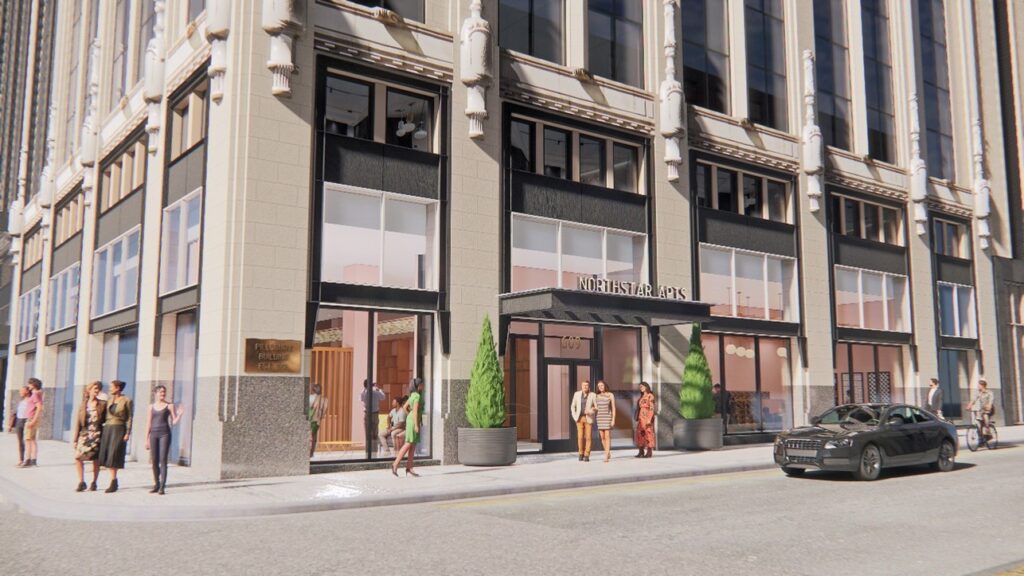Can Minneapolis address city center vacancies, affordable housing need simultaneously?
5 EYEWITNESS NEWS took a tour of the 1916 Northstar East Tower Monday, the City of Minneapolis’s $92 million pilot project to bring people back to the city center, in part by converting vacant commercial buildings into housing.
The 13-story building was erected in 1916, and by the 1960s, Dan Collison — director of business development and public affairs for Sherman Associates, the company heading up the conversion project — said it became the first mixed office and retail space in all of downtown.
It was “at a point of important renovation and rethinking of what downtowns could be,” Collison said in an interview outside of the tower Monday.
Sherman Associates will begin construction on the virtually vacant tower into 216 apartment units in about a month, Collison said.
Mayor Jacob Frey last week told 5 EYEWITNESS NEWS that these types of commercial to residential conversions — Northstar East the only one known to be in the works so far — could simultaneously address a need for affordable housing.
University of Minnesota professor David Shultz, who was formerly a city planner in New York State and taught housing and economic policy on and off for three decades, agreed that there is a “severe shortage” of affordable housing in Minneapolis, but he doesn’t expect much interest from developers.
“Converting commercial space into residential space is hugely expensive,” Schultz said.
“And generally, what we’ve seen across the country is this type of space goes to middle if not upper middle class and becomes really housing for more affluent people.”
Although Mayor Frey said some of the conversion costs could be brought down by creating dormitory-style affordable housing “where you keep the toilets all in one room,” Collison later confirmed that’s not a part of the Northstar East plan.

“There is no dormitory-style housing,” Sherman Associates senior developer Trevor Martinez chimed in.
“They are individual apartment units, and every unit will have at least one if not more, bathrooms.”
That type of housing is often referred to as “single occupancy units,” and as Schultz explained, they often come without kitchen or cooking facilities in unit as well.
“There might be a small market for that, but that’s certainly not a primary market that most people want,” he said.
“And with that, certainly not the type of units that developers normally want to develop because they are not profitable.”
Collison said — thanks, in part, to a nearly $7 million upfront investment from the City — 20% of the units are expected to be affordable per federal HUD standards, which have to be met to receive City subsidies.
Martinez said the affordable units will cost renters roughly $1,000 a month for a studio, up to about $1,300 for a 3-bedroom.
Sherman Associates already has plans to develop another property into part affordable housing, Collison said, recognizing it too will be expensive and come with a “significant” upfront investment of taxpayer dollars.
Asked why the developer has continued interest in apparently cost-prohibitive projects, Collison said it’s “for a lot of reasons.”
“One, there’s a sustainability factor to not have to tear down an entire building and throw it in the garbage, whatever way it might be thrown in the garbage. And the preservation aspect of this is to create the feel and the fabric of a building that’s been in existence since 1916.”

While it’s a “passion” for Sherman Associates as a downtown company, Schultz said most developers would take their work elsewhere.
“They’re not going to expend phenomenal amounts of money in terms of trying to build very inexpensive little places,” he continued. “They want to make money, and so their incentive is not going to be to build, let’s say, units that are affordable to people at, let’s say, low-income levels. It’s going to be at high-income levels.”
Construction of the Northstar East building is expected to wrap up in fall of 2024.
The Metropolitan Council previously forecasted Minneapolis would need to build a total of 3,499 affordable housing units to account for population growth between 2021 and 2030.